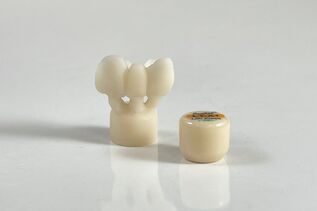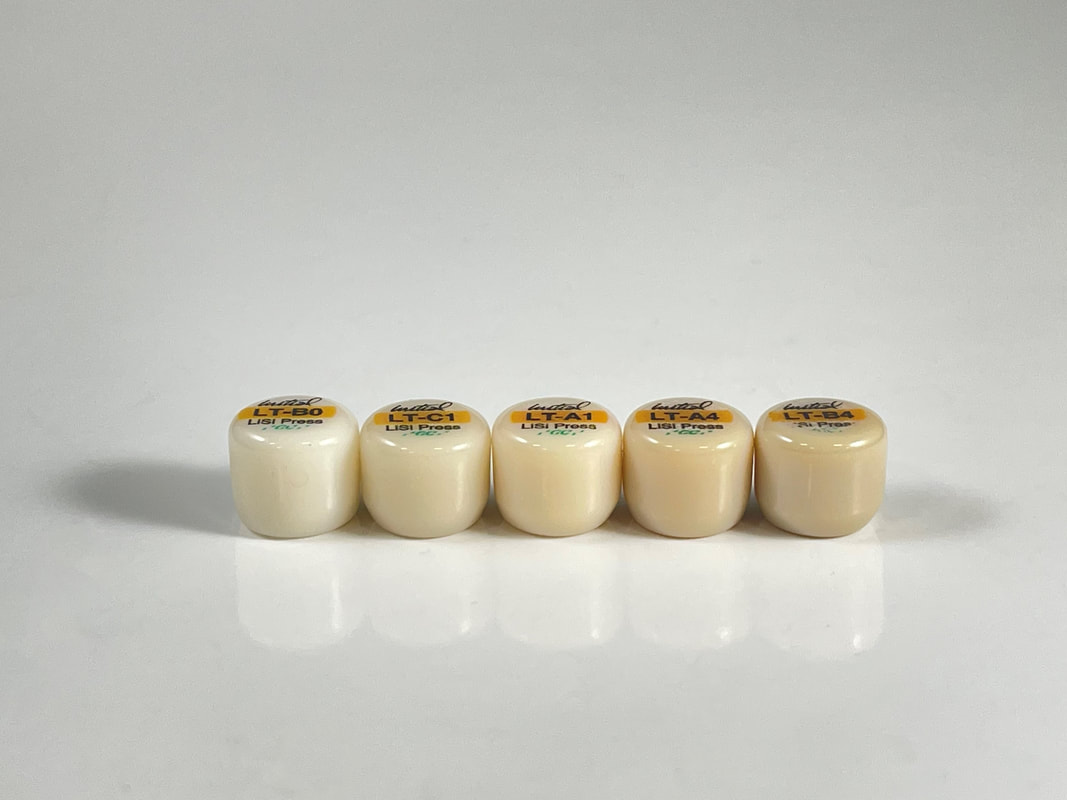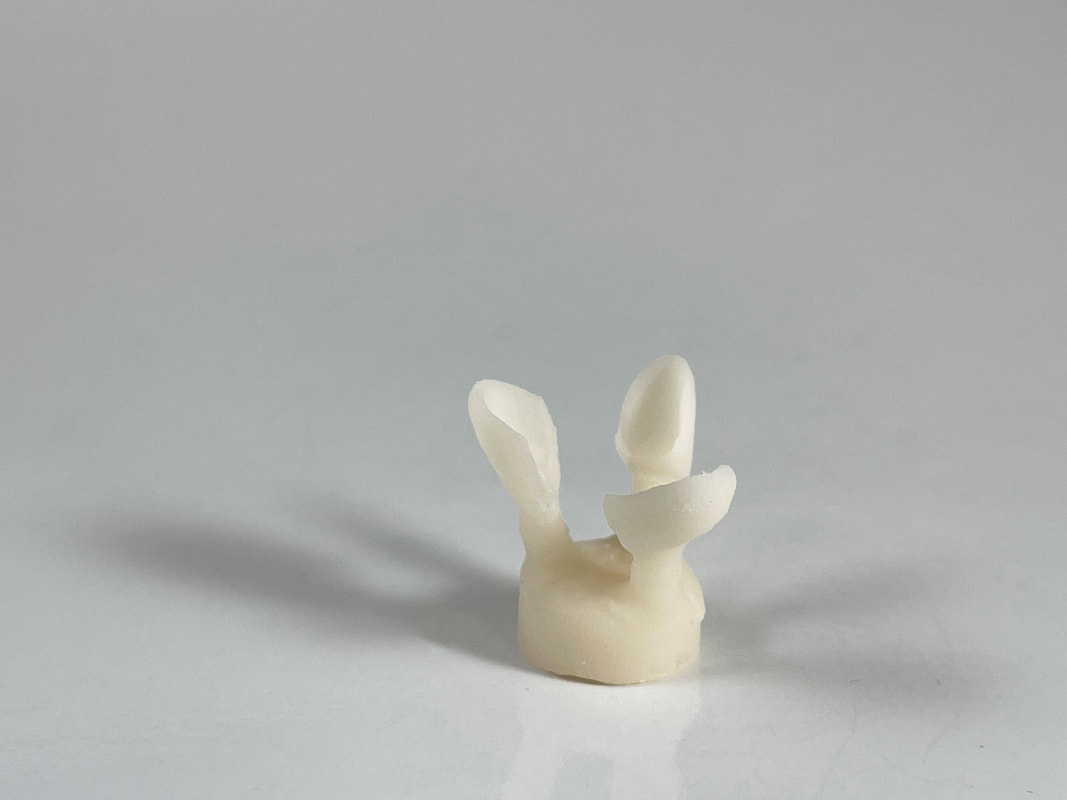|
Lithium disilicate is a biocompatible glass-ceramic material that is renowned for its high mechanical strength, form, function, fit, and aesthetics. The material offers high levels of chemical stability and flexural strength. Lithium disilicate restorations were shown to result in a survival between 92% and 97.8% after five years and 85.5% and 96.7% after 10 years. It is relatively easy to sand, making it less likely to wear the grinding head as much as other materials. It is an affordable alternative to zirconia and porcelain-fused-to-metal restorations. What is Pressed Lithium Disilicate?Pressed lithium disilicate is designed to enhance the quality of life and well-being of the patient without sacrificing the quality of the final restoration. The material is renowned for aesthetic, biocompatible restorations with excellent accuracy and fit. It has enamel-like properties, which result in long-lasting restorations that address and restore function, aesthetics, and biomechanics of the teeth. Pressable lithium disilicate is fabricated through a three-step process:
Pressing is the desirable production method as it enables the technician to get the full benefits of the material. Technicians can produce natural-looking restorations with the utmost precision. Pressed lithium disilicate is fully crystallized, resulting in long crystals that give the material its high flexural strength and fracture toughness. Moreover, the pressing method enables dental technicians to produce several restorations in one press cycle. Pressed lithium disilicate ingots are suitable for virtually every clinical situation:
Clinical Success of Pressed Lithium DisilicateOver ten years of clinical studies have found that press lithium disilicate performed better than conventional materials, such as glass or metal ceramics. It also outperformed its millable counterpart in terms of fracture toughness and biaxial flexural strength. pressed lithium disilicate offers high levels of safety, survival, toughness, and strength. Six studies focused on a total of 499 restorations over the course of four years documented a survival rate of 98.4% and a fracture rate of 0.4%. Additionally, a 2010 Ivoclar Vivadent® document stated that the pressed material has a fracture toughness of 2.75 megapascals (MPa) and a flexural strength of 470-500 MPa. In terms of fatigue, pressed lithium-disilicate monolithic crowns performed better than milled lithium–especially when treated with a self-etching ceramic primer. Processing Techniques of Pressed Lithium DisilicatePress gives provides the maximum level of flexibility when it comes to processing techniques for aesthetic restorations:
Preparation and CementationThe pressing technique allows the tooth structure to be prepared conservatively. Considering the minimum wall thickness of the restorations, the main objective is to maintain and preserve the dental hard tissue as best as possible. For example, inlays require a minimum layer thickness of only 1 millimeter (mm), while veneers require only 0.3 mm, and crowns require 1.5 mm. It’s vital to prepare a circular shoulder with rounded inner edges or a chamfer when designing the preparation. Heat-pressed lithium disilicate can be seated using adhesive, self-adhesive, or conventional cementation–depending on the indication. For optimal strength and bonding, pressed lithium disilicate should be etched prior to being seated. Furthermore, with conventional cementation, silanating is not necessary. Following cementation, occlusal adjustments are made with a fine diamond. Then, a diamond polishing system is used to polish the restorations to a high gloss. Crown and Bridge Restorations Near MeLooking for dental labs near me? The Dental Lab is a proud provider of both heat-pressed lithium disilicate and its milled counterpart. Our skilled technicians are experienced in both pressing methods as well as using CAD/CAM for milling. Visit our Crown and Bridge page to view more of our restorative products and services. Contact us today to send a case. Sources: Flexural resistance of heat-pressed and CAD-CAM lithium disilicate with different translucencies Early complications and performance of 327 heat-pressed lithium disilicate crowns up to five years CAD-CAM milled versus pressed lithium-disilicate monolithic crowns adhesively cemented after distinct surface treatments: Fatigue performance and ceramic surface characteristics Keywords:
The Dental Lab, dental lab, emax, emax lithium disilicate, lithium disilicate, crown and bridge, crowns and bridges, dental crowns, dental crowns, dental bridge, dental bridges, veneers, crowns, dental veneers, inlays and onlays, dental restoration, dentist, dental lab near me
1 Comment
Don Davies
7/21/2024 07:48:11 am
For all of my dental needs and appointments, I love going to https://familysmilesdg.com/crown-bridges/. My dentist takes excellent care of me and is a great professional. They have been treating my family for a very long time, and they do fantastic treatments.
Reply
Leave a Reply. |



